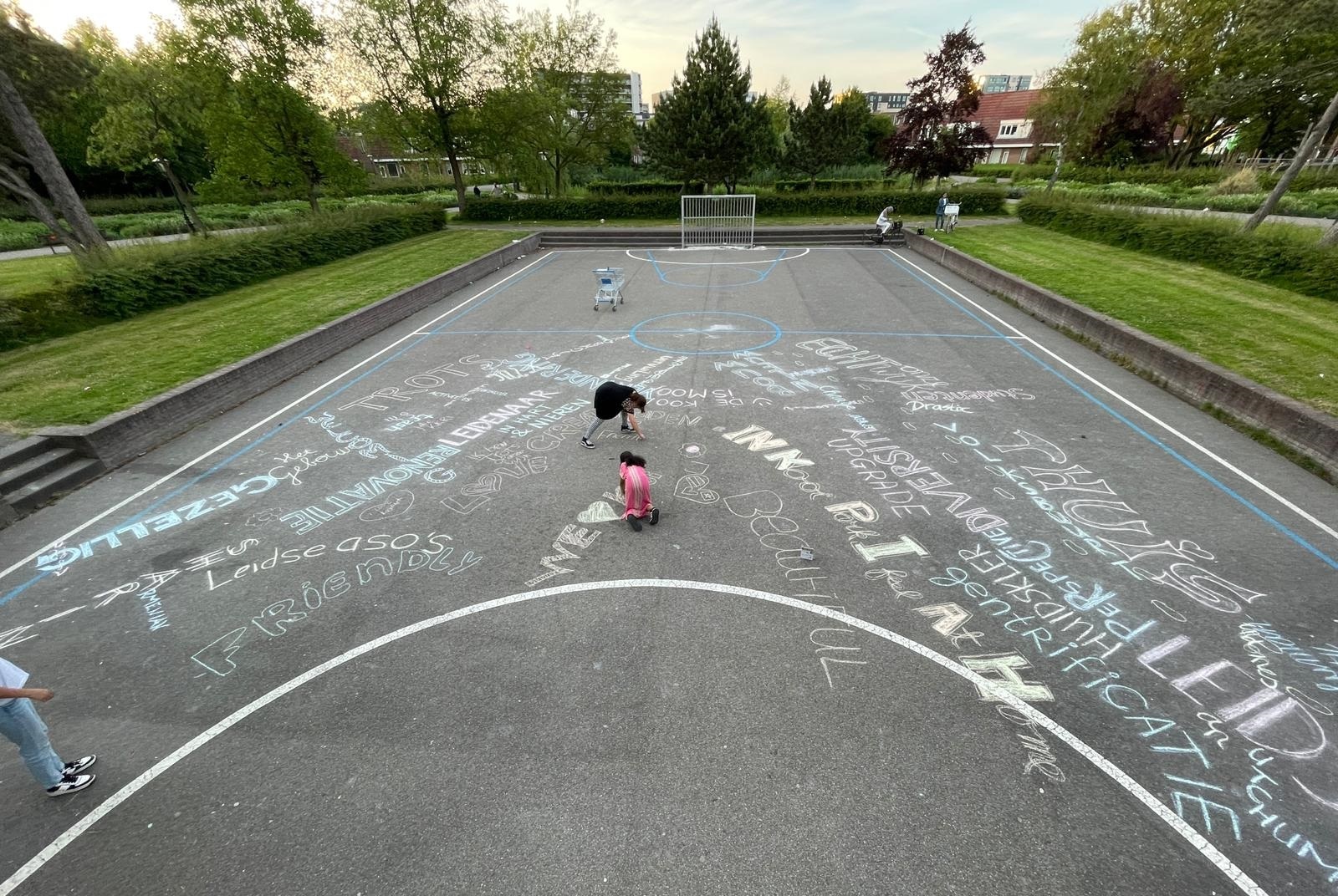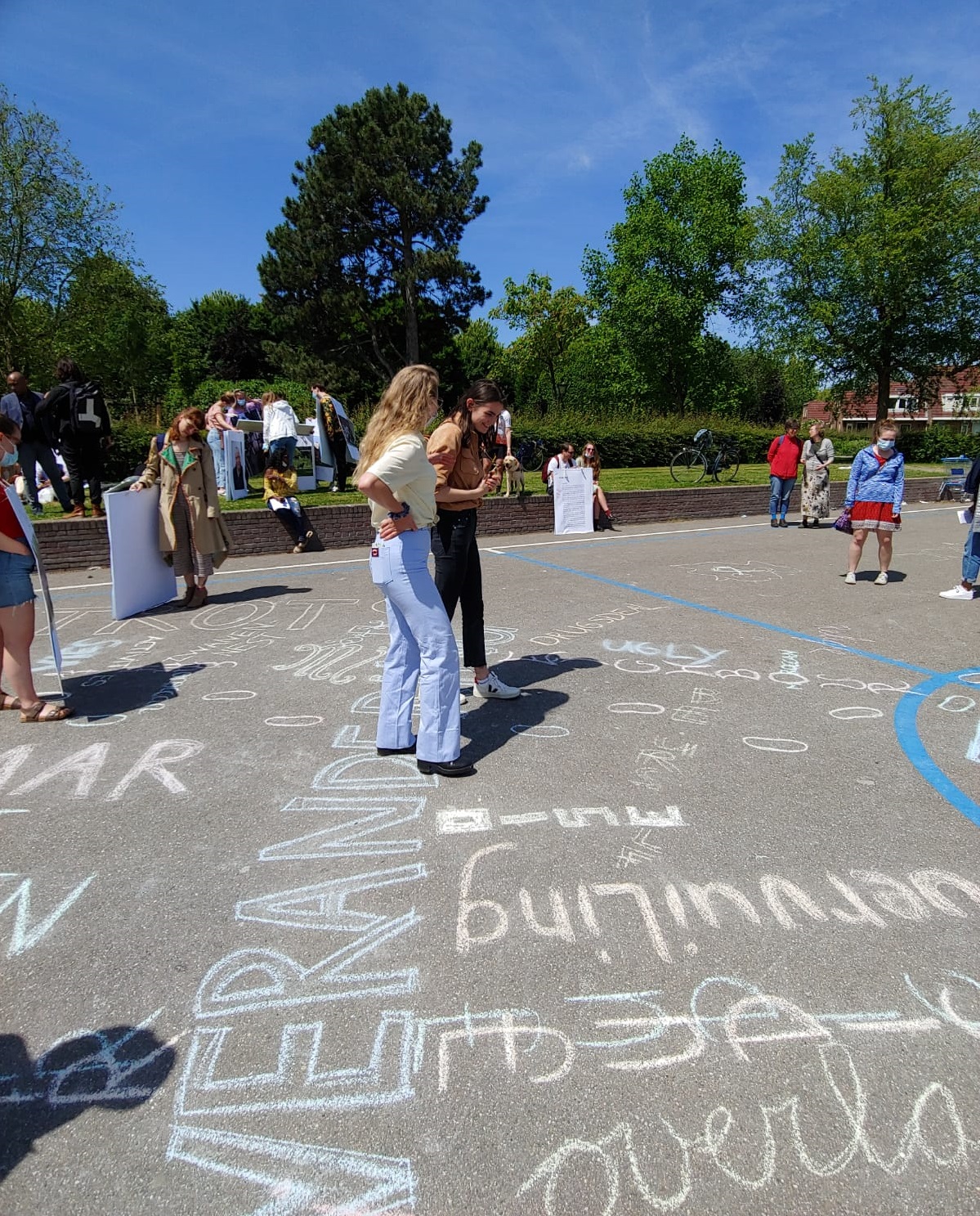
Master Honours Class 'Leiden Revisited': making an impact with art
To achieve societal impact, you need to do more than solely writing academic articles. That's the idea behind the Master Honours Class 'Leiden Revisited', in which students demonstrated with art how residents at the outskirts of Leiden experience the city. 'It's the perfect way to start the debate.'
Like many of us, professor of Law and Society Maartje van der Woude (Van Vollenhoven Institute) turned into a fanatic hiker during the pandemic. She discovered that Leiden is much more than just the city center. ‘In the city center you mainly see highly educated white people, while there is much more diversity on the outskirts of Leiden. Why do I never see these people? And do they feel connected to the city?’
These questions were the starting point of the Master Honours Class Leiden Revisited: Social Control and Social Cohesion in Insecure Times. By means of street interviews and observations, students investigated how residents at the outskirts of Leiden experience the city. Topics such as discrimination, social exclusion and ethnic profiling were also discussed.
Being part of a work of art
Under the guidance of artist collective Liquid Society, the students transformed the collected data into artistic expressions. These were presented at the end of the course with an art route through Leiden. Along this route there was a sidewalk chalk installation made by students and local residents. This installation was formed by words that were associated with the neighborhood, such as ‘working-class area’ or ‘cohesion’.
-

Residents wrote down words that were associated with their neighbourhood. -

The participants of the class visited the chalk installation during the final presentation walk in Leiden.
In addition, videos, poems, clothing, drawings and photos also showed the different faces of Leiden. But there is more, tells junior researcher and teaching assistant Nanou van Iersel. ‘The guests themselves were also part of a work of art. To their great surprise, they had to wear a sandwich board with photos of the art on it. This way we got a lot of attention and it was the perfect way to start the debate.’
Outlet
But why should students make a work of art instead of just writing a paper? Lot Vegter, one of the founders of Liquid Society, explains: ‘Artists look at social issues in an innovative way. In addition, you can use art to express your own vision and story. It is a debate starter and outlet for your insecurities and frustrations about the current world.’
Maartje adds that art brings something that is missing in science: social impact. ‘I've been writing about inequality and discrimination for years, but these publications don't change anything about the problems. To make social impact, scientists need other partners such as artists. This way you reach a much wider audience.’

Snowball effect
Students are full of praise for the new subject. Some said their perception of reality was changed dramatically, because these students never thought about topics such as stereotyping and discrimination. For Maartje, these are the micro victories. ‘These students talk with their housemates, friends and relatives. This snowball effect is what I believe in.’
With the combined forces of art and science, Maartje, Lot and Nanou want to make the world more beautiful. They hope that collaborations between different disciplines will become much more self-evident. Lot: ‘Look at that micro-impact that we facilitated together. That's what we can achieve with the right people.’
Text: Sarawitia Franken
Chalk installation: creation and pictures by Suzanne van Wieringen and Anna N Semi
